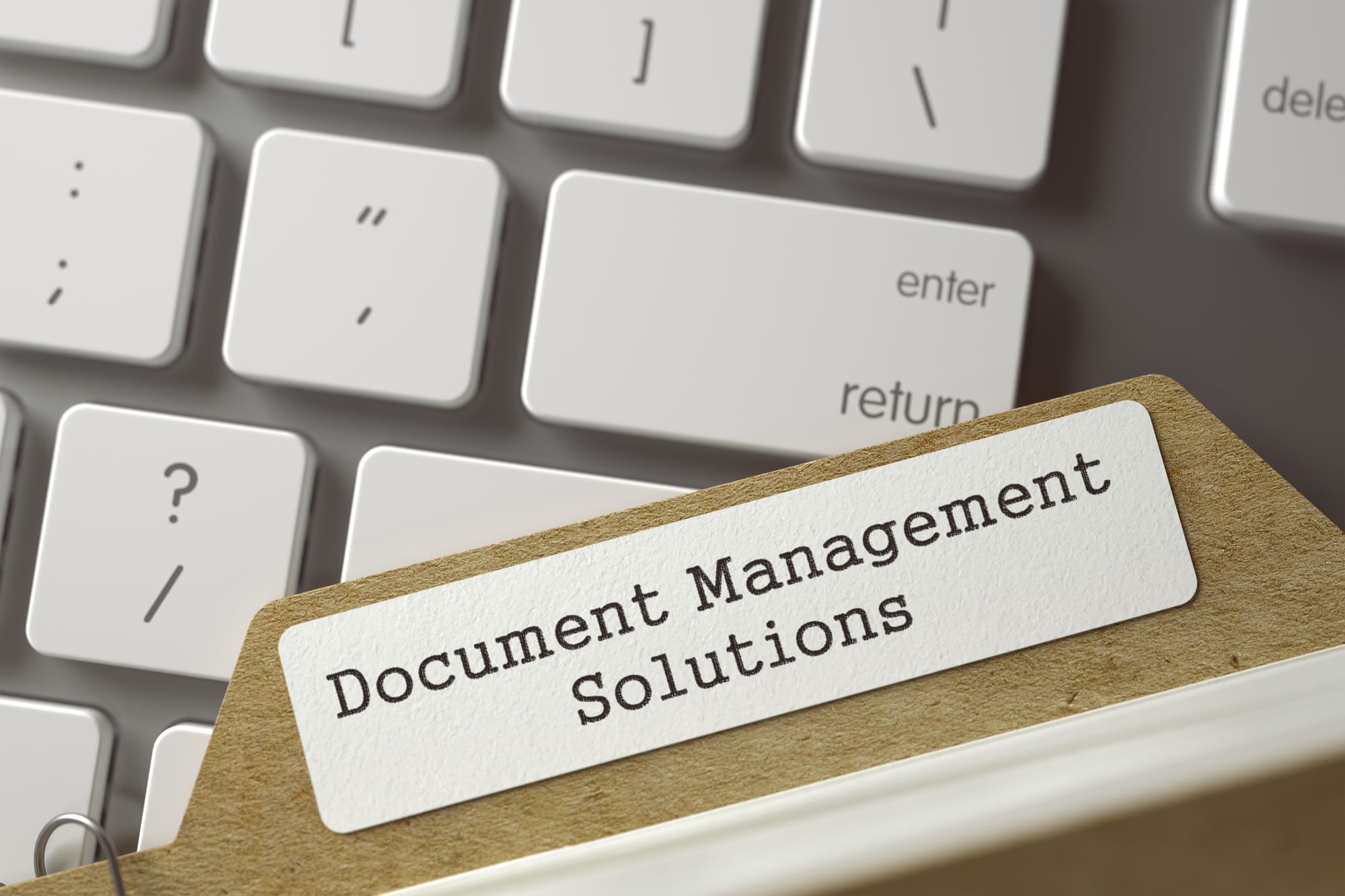
Choosing the Best Document Management System for Your Business in 2024
Are you overwhelmed with piles of paperwork and endless digital files scattered across your computer? You're not alone. Managing documents is one of the most tedious and time-consuming tasks in any business. But don't worry—there's a solution that can transform your office's chaos into streamlined efficiency: document management systems (DMS).
What is Document Management?
Let's start with the basics. Document management refers to the process of organizing, storing, and tracking electronic documents and images of paper-based information captured through document scanning. It’s all about getting control over the chaos and turning it into a structured and efficient system.
What Do Document Management Systems Do?
Document management systems (DMS) are software solutions designed to help businesses manage their documents and records electronically. They offer a wide range of features that automate and simplify document-related tasks. Here's a quick rundown of what a good DMS can do for you:
- Capture: Scan and import paper documents, emails, and digital files into a central repository.
- Store: Securely store documents in an organized, digital format.
- Retrieve: Quickly search and retrieve documents using keywords or metadata.
- Share: Easily share documents with team members or external partners.
- Track: Monitor document changes and maintain version control.
- Automate: Automate workflows and approval processes.
Now that we've covered the basics, let's dive deeper into why you need a DMS and how to choose the best one for your business in 2024.

Why You Need a Document Management System
Remember the last time you had to dig through a stack of papers to find a single document? Or the frustration of searching countless folders on your computer for a misplaced file? Traditional document management methods are inefficient, error-prone, and stressful.
- Time-Consuming: Manually organizing and retrieving documents can eat up a significant chunk of your workday.
- Error-Prone: Misplacing documents or dealing with version control issues can lead to costly mistakes.
- Space-Consuming: Physical documents require storage space, which can be expensive and cumbersome.
- Security Risks: Physical documents and poorly managed digital files are vulnerable to theft, loss, and damage.
The Solution: Document Management Systems
A DMS addresses these pain points by providing a centralized, organized, and secure platform for all your documents. Here’s how a DMS can transform your business:
- Improved Efficiency: Instantly access documents with a quick search, saving time and reducing frustration.
- Enhanced Collaboration: Share documents with colleagues effortlessly and work on the same document simultaneously.
- Better Compliance: Maintain compliance with industry regulations by securely storing and tracking documents.
- Cost Savings: Reduce the need for physical storage space and minimize printing and paper costs.
- Increased Security: Protect sensitive information with robust security features like encryption and access controls.
Key Features to Look for in a Document Management System
Choosing the right DMS can be overwhelming with so many options available. To make the process easier, focus on these key features that will provide the most value to your business:
User-Friendly Interface
A DMS should be intuitive and easy to use. If the system is complicated, your team may resist adopting it, defeating its purpose. Look for a clean, user-friendly interface that requires minimal training.
Robust Search Functionality
The ability to quickly find documents is crucial. Advanced search options, including full-text search and metadata search, make it easy to locate any document within seconds.
Secure Storage
Security is paramount. Ensure the DMS offers features like encryption, user access controls, and secure backup to protect your documents from unauthorized access and data loss.

Version Control
Version control tracks changes made to a document and allows users to access previous versions. This feature is essential for maintaining accuracy and ensuring that team members are always working with the most up-to-date information.
Integration Capabilities
Your DMS should integrate seamlessly with the other software tools your business uses, such as email, CRM, and accounting systems. This ensures a smooth workflow and eliminates the need for duplicate data entry.
Workflow Automation
Automating repetitive tasks and workflows can save time and reduce errors. Look for a DMS that offers customizable workflows to streamline document approval processes, notifications, and task assignments.
Mobile Access
In today’s mobile world, having access to your documents on the go is essential. Choose a DMS that offers mobile apps or a mobile-friendly interface so you can manage documents from anywhere.
Scalability
As your business grows, your document management needs will evolve. Ensure the DMS can scale with your business, offering additional storage, features, and integrations as needed.

Steps to Choosing the Best Document Management System
With a clear understanding of what to look for, let’s go through the steps to choose the best DMS for your business in 2024.
1. Assess Your Needs
Start by evaluating your current document management processes. Identify pain points, inefficiencies, and specific needs that a DMS can address. Consider factors such as the volume of documents, types of documents, number of users, and security requirements.
2. Set a Budget
Determine how much you’re willing to invest in a DMS. Consider not only the initial setup costs but also ongoing subscription fees, maintenance, and any additional costs for storage or features.
3. Research and Shortlist
Research various DMS providers and create a shortlist of those that meet your criteria. Look for reviews, testimonials, and case studies to gauge the experiences of other businesses with similar needs.
4. Request Demos
Contact the shortlisted providers and request demos of their systems. This will give you a hands-on experience of the interface, features, and usability. Pay attention to how intuitive the system is and whether it meets your specific requirements.
5. Evaluate Support and Training
Good customer support and training are crucial for a smooth implementation and ongoing use of the DMS. Evaluate the support options provided by the vendor, such as live chat, phone support, and training resources.
6. Check for Customization Options
Every business has unique needs. Ensure the DMS offers customization options to tailor the system to your specific workflows and requirements. This could include custom fields, templates, and workflow configurations.
7. Consider Compliance and Security
Ensure the DMS complies with industry regulations relevant to your business, such as GDPR, HIPAA, or FINRA. Verify the security measures in place to protect your documents and sensitive information.
8. Review the Contract
Before making a final decision, carefully review the contract terms. Look for any hidden fees, the duration of the contract, cancellation policies, and any commitments required. Ensure you understand all the terms and conditions.

Popular Document Management Systems in 2024
To help you get started, here are some of the top document management systems in 2024:
M-Files
M-Files is known for its user-friendly interface and powerful search capabilities. It uses metadata to organize documents, making it easy to find and manage files. M-Files also offers robust security features, version control, and workflow automation.
DocuWare
DocuWare is a cloud-based DMS that provides comprehensive document management solutions for businesses of all sizes. It offers secure storage, advanced search, integration with various applications, and mobile access. DocuWare also supports workflow automation and electronic signatures.
Laserfiche
Laserfiche is a highly customizable DMS that caters to a wide range of industries. It offers powerful document capture, storage, and retrieval features. Laserfiche’s workflow automation capabilities streamline business processes, and its integration options ensure seamless connectivity with other business systems.
SharePoint
Microsoft SharePoint is a popular choice for businesses already using Microsoft Office products. It offers robust document management, collaboration, and integration features. SharePoint’s scalability makes it suitable for businesses of all sizes, and its mobile access ensures you can manage documents on the go.
Dropbox Business
Dropbox Business is a cloud-based DMS known for its simplicity and ease of use. It offers secure storage, file sharing, and collaboration features. Dropbox Business integrates with various third-party applications and provides mobile access, making it a versatile choice for many businesses.

Making the Transition to a Document Management System
Transitioning to a DMS can seem daunting, but with careful planning and execution, it can be a smooth and beneficial process. Here’s how to make the transition effectively:
Plan the Implementation
Create a detailed implementation plan that outlines the steps, timeline, and resources needed for the transition. Assign roles and responsibilities to ensure everyone knows their part in the process.
Digitize Existing Documents
Start by digitizing your existing paper documents. This may involve scanning documents, organizing digital files, and importing them into the DMS. Ensure that all documents are properly categorized and tagged with relevant metadata for easy retrieval.
Train Your Team
Provide comprehensive training for your team on how to use the new DMS. This includes navigating the interface, performing searches, managing workflows, and maintaining security protocols. Ongoing training and support will help ensure successful adoption.
Monitor and Adjust
Monitor the implementation process and gather feedback from your team. Identify any issues or challenges and make adjustments as needed. Regularly review the system’s performance and make improvements to optimize efficiency.
Choosing the best document management system for your business in 2024 can revolutionize how you handle documents, enhance efficiency, and reduce stress. By understanding your needs, setting a budget, researching options, and following a structured selection process, you can find a DMS that fits your business perfectly.
Author: Hudson Piccini
Hudson Cynar, a Harvard University alumna and the owner of three prosperous enterprises, is a distinguished business consultant, author, and writer. Her expertise spans multiple business sectors, with a particular emphasis on storage containers, commercial copiers, payroll services, and medical billing software. Dedicatedly investing thousands of hours into product and service research, Hudson crafts insightful reviews to guide entrepreneurs in making informed decisions for their businesses.
